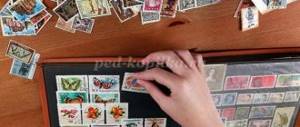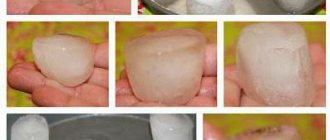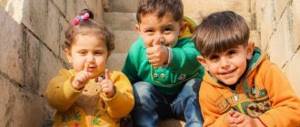Experience "Wind in the Desert"
The experimental game can be played in a sandbox or poured sand into a basin. Level the surface of the sand. And then invite the child to become the wind and blow on the sand. Sand waves will begin to appear on the surface of his “sandy desert”. If you continue to blow, the sand will move from one place to another and you will get hills. Let the child try to make “dunes” - sand hills. This is how the wind helps the sand travel across the desert.
It is very important that already in preschool age the child understands that not everything in the world is so simple, and in every phenomenon one can find good and bad sides. Important. so that he can think independently and explain his point of view. These skills do not develop on their own, but in communication with an adult who poses problematic questions to the child with ambiguous answers.
Let's think together.
Why is wind good? Because in the summer when it’s hot, when the wind blows, it’s not so hot. Because the wind fills the sails and the ships can sail. Because the wind carries the seeds of plants, with the help of the wind you can fly a hot air balloon and fly kites. The wind helps to operate windmills and wind turbines.
Why is wind bad? If the wind blows in cold winter, you freeze. There is a storm at sea in strong winds, and ships can sink. A strong storm can destroy houses and uproot trees. The wind carries the seeds of not only useful plants, but also weeds.
With your child, choose as many words as possible that describe what the wind is like. With the help of such exercises, you will not only enrich your child’s vocabulary, but also teach him to be attentive to the selection of words and notice interesting figurative words in stories and fairy tales.
What wind? He can be strong. How can I say it differently? Violent, fast, furious wind, dashing, furious, assertive, merciless, gusty, fierce, whistling, swift, terrible, hurricane, squall, furious, powerful, restless, piercing, cold, evil. fierce, angry, nasty, mournful, gloomy, scary, icy.
But it happens the other way around - what kind of wind? Yes, weak, light. How can I say it differently? Gentle, quiet, warm, cheerful, southern, spring.
Now let's find the words, what does the wind do? It blows, howls, makes noise, whistles, shakes trees, disperses clouds, drives leaves, brings sounds to us.
What is a light wind called? Breeze. What if the wind is strong? Windy. What if it’s very strong? Storm, hurricane, storm, tornado.
How to conduct speech exercises to select words?
I love doing these word-selection exercises with children in the form of a game. For example, if we play with words in winter, then we help the wind cover the ground with snowflakes. One word is one snowflake! And you need to cover a lot of the land shown in the picture! So we are choosing words for a very long time, because we cannot allow a bush or flower to freeze without snow! We picked a word and placed a paper snowflake on our winter landscape. One more word - they put a second snowflake and so on until we cover the whole earth. I suggest the most difficult, rarely occurring words, the children say more common words.
If we play in the fall, we help the wind pluck leaves or transfer seeds. You can come up with any game situation. In such games, the child sees the result of his efforts and therefore strives to find as many words as possible about the wind. I am always surprised, but this is a fact - children remember exactly where THEIR snowflake or leaf is that they helped the wind and what exactly the snowflake covered them, even if the game takes place in a large group of children!!!
I call this method of work “visual result of speech.” If you just choose a lot of words, then the children do not understand the meaning - why this is necessary, and they become bored. And by completing a game task with a result that can be seen and touched, they become interested! The rich vocabulary that children gain as a result of such exercises is so necessary both at school and in life!
Where does the wind come from - experience for children 5-6 years old
The experiment was developed by O.V. Dybina.
1.You will need a candle and a snake. The snake is very easy to make:
Take a circle of thin paper and cut it in a spiral, then hang the resulting piece by a thread.
- Light a candle and blow on it. Why did the flame deviate? (blows air).
- Place the snake over the candle flame. What happens to the snake? It will start to spin. Why does it rotate? Because warm air goes up and lifts the snake.
- You can try to have the children do this experiment themselves, but not with a candle! You need to hold the snake over a hot battery.
2. Go to a door (for example, leading to a glass balcony) and try to determine where the wind is blowing at the top of the doorway (above) and near the floor (below). In order to determine which way the wind is blowing, you can place two candles - one at the bottom and one at the top and see where their flames deviate. Or take a thin napkin or cotton wool and bring it to the door. Where will she go?
3. Why does the wind blow in different directions? It turns out that at the top the air is escaping from the room to the outside. This is warm air. He goes outside. And cold air is heavier and is at the bottom. He enters the room from the street. This creates “wind” in the room. But this is exactly how wind happens in nature.
It turns out that wind is air movement! Warm air moves above and cold air below, and they tend to change places.
4.You can draw arrows to indicate which way the wind blows in the room. The red arrow at the top of the doors will indicate warm air. And the blue arrow below is cold air.
5.If there is a draft in your room, and you often ask your child not to sit on the floor near the doors, then remind him of this. Ask why you are asking him not to do this? Now he already knows what caused your request and will have a completely different attitude towards its implementation!
Note: you should not overload your preschooler with knowledge about physical phenomena that are not yet accessible to understanding, and say that the distribution of atmospheric pressure plays an important role in the appearance of wind. For a preschooler, such a short answer to his question “Why is there wind” is quite enough. But other reasons associated with the appearance of different types of wind can already be explained to the schoolchild. What kind of wind there is and why it happens, you will see in this video for older children - school age.
Ships (game experience for children 3-4 years old)
Take a bowl of water. Make paper boats. You will see how to make boats in this video.
This is a diagram for making a paper boat for an experiment.
Put the boats on the water. Blow on them with your child. Why did the boats sail? (they are pushed by the breeze). Where did the breeze come from? It was we who exhaled the air.
Organize a boat competition. Which boat will sail to the other shore faster (for this you need to take a square-shaped basin or a baby bath). Ask your child how to blow to make the boat sail quickly?
Try to make different winds - a soft and light breeze, a strong hurricane, a fierce storm.
Boats for this game can be made not only from paper, but also from walnut shells. Using plasticine, attach a stick with a sail to the shell (a paper sail on a toothpick stick will do). Blow on the sail. How should you blow to make the boat float?
Read to your child the lines about the wind by A.S. Pushkin.
Method No. 1: Cold weather and a candle
The main condition is cold weather outside. In summer or spring you will have to use other methods. If a child suddenly asks, “Maaam, why is the wind blowing?”, then we don’t get lost, but take a candle and go to the door. We light the flame and bring it to the top crack of the slightly open doorway. We see that the flame tends outward, carried away by the flow of warm air. This is the wind that comes from the air heated in the house. follows from this : heated air rises .
Then we lower the candle to the lower slit and see that the flame has changed its inclination and is now directed inward. This happens because cold air tends to take the place of heated air. Therefore, fact two: cold air tends to take the place of warm air . This concludes the practical part. And move on to the theoretical explanation that there are warm places on the globe (like in the house) and cold places (like on the street). The movement of air between them leads to the appearance of wind.










